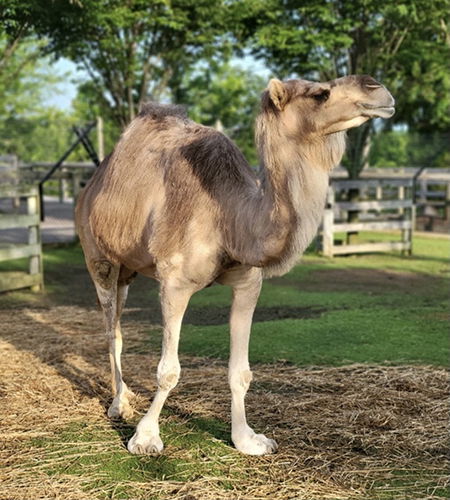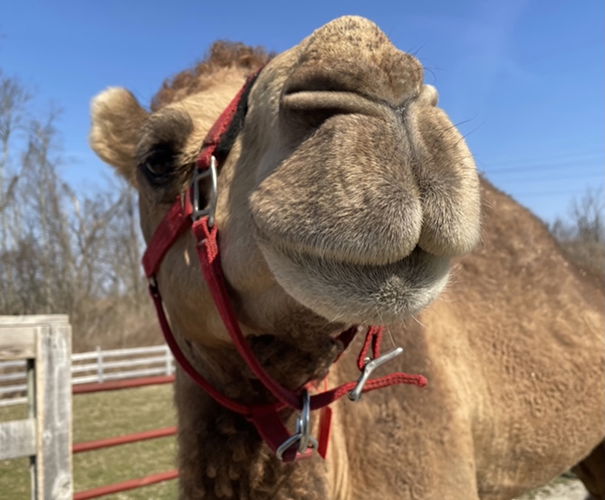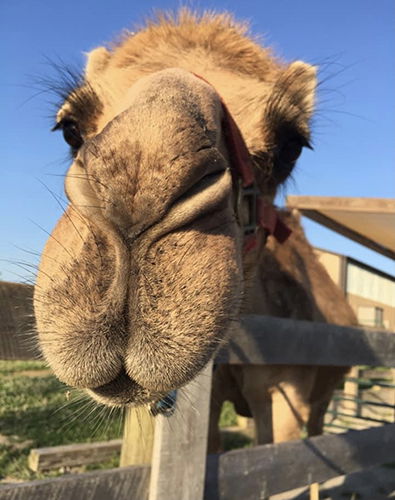Dromedary Camel
Every day is “Hump Day” when you’re a camel! The Ararat Ridge Zoo is home to a caravan of dromedary camels. Native to northern Africa and the Middle East, dromedary camels have one hump, while Bactrian camels from central Asia have two humps. An easy way to remember is that a “D” (for dromedary) on its side forms one “hump,” while a “B” (for Bactrian) on its side forms two “humps.”
Dromedary camels survive for weeks and travel over 100 miles without eating or drinking. However, camel humps are not full of water—that’s a myth! Instead, their humps are made of fat and cartilage. Camels store water in their bloodstream. Their oval-shaped blood cells expand 2.5 times their size to hold water. In fact, camels can drink 30 gallons in 10 minutes!
Do you know how Abraham’s son Isaac found his wife, Rebekah? Genesis 24 tells us that Abraham’s servant took 10 camels and went to the well outside the city of Nahor. There he prayed that the woman who offered to draw water for both him and his camels would be the woman God wanted to marry Isaac. When Rebekah appeared, she drew water for the servant and then said, “I will draw water for your camels also, until they have finished drinking.” (Genesis 24:19). Considering each of his 10 camels could drink 30 gallons in 10 minutes, that was quite the offer, proving she was worthy to marry Isaac.
Did you know dromedary camels can survive not only extreme heat but extreme cold as well? They can fluctuate their body temperature between 93°F and 106°F. To survive sandstorms, they have clear third eyelids, long eyelashes, and long ear hair to keep sand out. They can also seal their nostrils to prevent inhaling dust. The tough calluses on their knees and pedestals on their chests support their bodies while lying down and prevent burns from the hot sand. Despite weighing an average of 1200–1600 pounds, leathery foot pads allow camels to walk on top of the sand instead of sinking into it.
Humans have relied on camels for thousands of years for hauling, fiber, hides, milk, and meat. Camel racing is a popular sport, as they can run up to 40 mph! At the Ararat Ridge Zoo, we offer camel rides on select days as well as camel encounters, where guests can meet and feed camels up close.
Watch this short clip of CJ as he drinks from a garden hose.
CJ loves the leaf blower!
- © 2024 Answers in Genesis
- Privacy Policy
- Contact
- About





